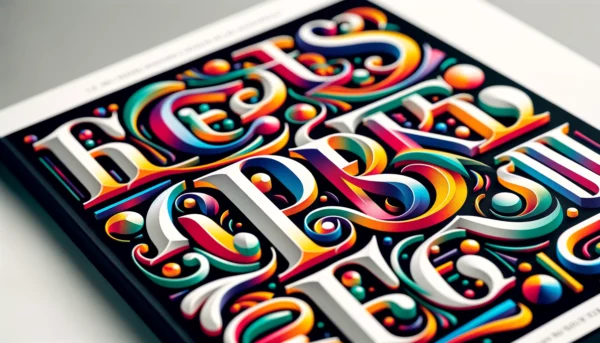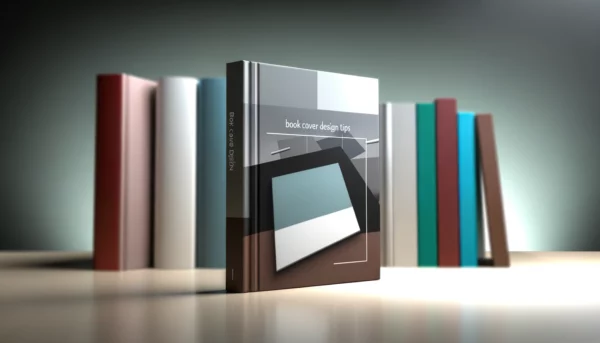They say you can’t judge a book by its cover, but let’s be real—everyone does. Your non-fiction book cover isn’t just an image; it’s your first handshake with a potential reader, and no one trusts a limp handshake. It needs to exude authority and credibility from the get-go, convincing people that the knowledge inside is worth their time (and money). Think of your book cover as your book’s suit and tie, a reflection of professionalism and expertise.
Non-fiction book cover design is an art form that blends creativity with psychology, so let’s break down how you can dress your book for success.
The Basics: What Sets Non-Fiction Book Covers Apart?
When it comes to cover design, non-fiction book covers march to the beat of their own drum. While fiction covers might pull readers into a world of imagination, non-fiction covers need to build trust and establish credibility. You’re not just telling a story; you’re offering insight, guidance, and answers. This means your cover needs to reflect those elements with clarity.
Your Publishing Journey Awaits – Start NowFirst things first: typography. That font says a lot about your book. Fonts that are too playful can undermine your message. A bold, clean, and professional typeface instantly communicates seriousness and authority. Combine that with the right color scheme, and your cover will start to command attention.
A well-designed non-fiction book cover also uses imagery that’s both simple and symbolic. If you’re writing about leadership, for instance, a lone, towering figure might represent the essence of your message. Keep it subtle but strong.
Understanding Your Non-Fiction Book
Before diving into the design elements, it’s crucial to have a clear understanding of your non-fiction book. Knowing the core message and the unique value your book offers will guide every design decision you make. This foundational step ensures that your cover not only looks good but also accurately represents the content inside.
Establish Your Book’s Unique Selling Point
To create an effective non-fiction book cover, it’s essential to understand your book’s unique selling point (USP). Your USP is what sets your book apart from others in the same genre. It’s the key benefit that your book offers to readers. To establish your book’s USP, consider the following:
- What problem does your book solve for readers? Think about the specific issues or challenges your book addresses. Whether it’s offering new insights into a historical event or providing practical advice on personal finance, your book should promise a solution.
- What unique perspective or insight does your book offer? Your personal experiences, research, or unique approach can differentiate your book from others. Highlight what makes your viewpoint special.
- What sets your book apart from others in the same genre? Identify the elements that make your book stand out. It could be your writing style, the depth of your research, or the practical applications you provide.
- What is the main takeaway or benefit that readers will gain from your book? Clearly define the primary benefit your readers will get. This could be a new skill, a deeper understanding of a topic, or a fresh perspective on a familiar issue.
By understanding your book’s USP, you can create a non-fiction book cover that effectively communicates the value of your book to potential readers. This clarity will help you design a cover that not only attracts attention but also resonates with your target audience.
Key Elements of a High-Impact Non-Fiction Book Cover Design
Book design, much like your wardrobe, involves a few key pieces that need to work together harmoniously. Let’s dive into the three essential elements: typography, color, and imagery.
Typography: The Power of Font Choice
Your font is your voice before anyone even cracks the spine. For non-fiction, this choice can make or break your authority. Fonts like Garamond or Baskerville are classic choices that radiate professionalism. On the flip side, overly stylized or handwritten fonts may send mixed signals to readers, giving off a casual or unserious vibe.
Color: The Psychology Behind the Palette
Color is one of the most powerful design tools for evoking emotion. If your book is about financial success, strong, dependable colors like navy or deep green will instill confidence. If you’re tackling a more personal subject, like mental health, softer tones such as pastel blues or calm grays may connect better with your audience. The key is balance—too many bold colors, and your cover may look more like a party invitation than a serious read.
Imagery: Say More with Less
Non-fiction covers often benefit from clean, minimalist imagery. Remember, you’re trying to convey a message, not distract your reader with visual clutter. A well-placed image—whether it’s a graph, a metaphorical object, or a portrait—can draw a reader in, while too much noise can push them away. Think about how the imagery ties to your book’s theme: is it a symbol of success, a depiction of a problem being solved, or a visual representation of transformation?
Establishing Authority and Credibility
In the world of non-fiction, authority and credibility are paramount. Your readers need to trust that you are a reliable source of information. This trust begins with your book cover and extends to your author credentials and endorsements.
Your Publishing Journey Awaits – Start NowAuthor Credentials and Bio
As a non-fiction author, establishing your authority and credibility is crucial to building trust with your readers. Your author credentials and bio play a significant role in establishing your credibility. Here are some tips to consider:
- Include your relevant education, training, and experience in your bio. Highlighting your background shows readers that you have the expertise to write on the subject. Whether you have a degree in the field, years of professional experience, or specialized training, make sure to mention it.
- Highlight any notable achievements, awards, or recognition you’ve received in your field. Awards and recognitions serve as third-party validations of your expertise. They can significantly boost your credibility.
- Use a professional photo that presents you in a credible and approachable light. A high-quality, professional photo can make a strong first impression. It should convey both professionalism and approachability.
- Keep your bio concise and focused on your expertise and credentials. While it’s important to provide enough information to establish credibility, your bio should be succinct and to the point. Focus on the most relevant details that highlight your authority on the subject.
By showcasing your author credentials and bio, you can establish your authority and credibility with potential readers and increase the perceived value of your book. This not only helps in building trust but also in convincing readers that your book is worth their time and investment.
Endorsements and Reviews
Endorsements and reviews from reputable sources can significantly enhance your book’s credibility and appeal. Here are some tips to consider:
- Reach out to influencers, experts, and thought leaders in your field to request endorsements. A positive endorsement from a well-known figure can lend significant weight to your book. It shows that respected individuals in your field recognize the value of your work.
- Encourage readers to leave reviews on online platforms such as Amazon and Goodreads. Reader reviews provide social proof that your book is worth reading. They can influence potential readers’ decisions and boost your book’s visibility.
- Use testimonials and reviews from satisfied readers to promote your book. Highlighting positive feedback from readers can build trust and credibility. Consider featuring some of these testimonials on your book cover or in your marketing materials.
- Consider using a review or endorsement on your book cover to add credibility and appeal. A well-placed endorsement or review snippet on your cover can immediately catch the eye of potential readers and add an extra layer of credibility.
By leveraging endorsements and reviews, you can build credibility and trust with potential readers and increase the visibility and appeal of your book. These elements can be powerful tools in convincing readers that your book is a valuable and trustworthy resource.
Choosing the Right Design Elements to Boost Authority
Let’s be honest—your book cover has about half a second to convince someone it’s worth picking up. So, how do you make sure it conveys authority in that tiny window of time? By mastering contrast, simplicity, and alignment with your target audience.
Contrast: Make it Pop
Design contrast is your best friend. Bold text against a clean background ensures your title stands out. Just like a headline in a newspaper grabs your attention, your title needs to command focus at first glance. Simple, high-contrast designs are statistically more effective at capturing attention .
Simplicity: Less Is More
In non-fiction, less is often more. A cluttered cover doesn’t scream “professional,” it whispers “amateur.” Streamlining your design with clean lines and minimal elements not only looks polished but also directs the reader’s focus to what matters most—your book’s message. Steve Jobs once said, “Simple can be harder than complex,” and nowhere is this truer than in cover design.
How to Attract Your Target Audience: Know Your Readers, Know Your Design
Your book is for someone specific, and your cover should speak directly to them. A book on productivity aimed at corporate leaders needs a drastically different look than a memoir for young entrepreneurs. Understanding your audience is crucial—are they looking for practical guides, inspirational stories, or data-driven insights?
For example, if you’re writing about personal finance, your cover should convey trustworthiness and expertise. Blue tones, clean fonts, and straightforward design tell readers you’re serious about helping them navigate their financial futures.
Working with a Professional Designer: Bringing Your Vision to Life
Sure, you can DIY your book cover, but there’s a reason professionals exist. A good designer understands how to balance artistic flair with the core principles of non-fiction cover design. Don’t be afraid to collaborate—communicate your vision clearly but be open to their expertise.
At Spines, we pair authors with both AI-powered cover design and human expertise to ensure your cover hits all the right notes. Our platform offers multiple cover design options that reflect bestsellers in your genre, so your book is not only well-designed but also competitive on the shelves.
Your Book’s Cover—A First Step Toward Success
In a crowded marketplace, your non-fiction book cover is more than just decoration—it’s your first conversation with a potential reader. A well-crafted cover speaks volumes about the content inside, drawing in the right audience and setting you up as an authority in your field.
Remember, your book cover isn’t just about looking good; it’s about building trust. With the right combination of typography, color, and imagery, your cover can convey credibility, attract readers, and, most importantly, sell your book.Ready to design a cover that reflects your expertise? Spines offers an intuitive platform that combines AI and human creativity to help you create a stunning, professional book cover that stands out on the shelves. Sign up for free today, and let us help you bring your vision to life.
Your Publishing Journey Awaits – Start Now







